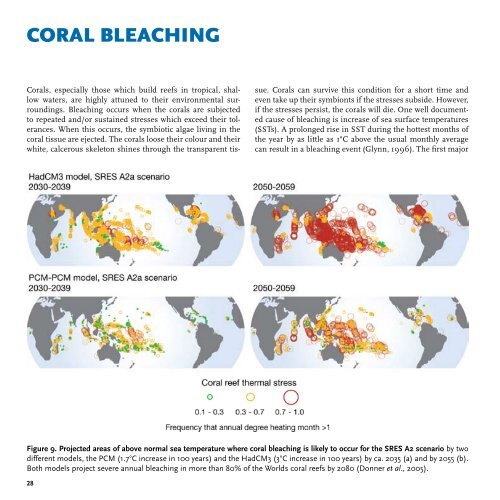In Dead Water: Merging of climate change with - UNEP
In Dead Water: Merging of climate change with - UNEP
In Dead Water: Merging of climate change with - UNEP
Create successful ePaper yourself
Turn your PDF publications into a flip-book with our unique Google optimized e-Paper software.
CORAL BLEACHING<br />
Corals, especially those which build reefs in tropical, shallow<br />
waters, are highly attuned to their environmental surroundings.<br />
Bleaching occurs when the corals are subjected<br />
to repeated and/or sustained stresses which exceed their tolerances.<br />
When this occurs, the symbiotic algae living in the<br />
coral tissue are ejected. The corals loose their colour and their<br />
white, calcerous skeleton shines through the transparent tis-<br />
sue. Corals can survive this condition for a short time and<br />
even take up their symbionts if the stresses subside. However,<br />
if the stresses persist, the corals will die. One well documented<br />
cause <strong>of</strong> bleaching is increase <strong>of</strong> sea surface temperatures<br />
(SSTs). A prolonged rise in SST during the hottest months <strong>of</strong><br />
the year by as little as 1°C above the usual monthly average<br />
can result in a bleaching event (Glynn, 1996). The first major<br />
Figure 9. Projected areas <strong>of</strong> above normal sea temperature where coral bleaching is likely to occur for the SRES A2 scenario by two<br />
different models, the PCM (1.7°C increase in 100 years) and the HadCM3 (3°C increase in 100 years) by ca. 2035 (a) and by 2055 (b).<br />
Both models project severe annual bleaching in more than 80% <strong>of</strong> the Worlds coral reefs by 2080 (Donner et al., 2005).

















